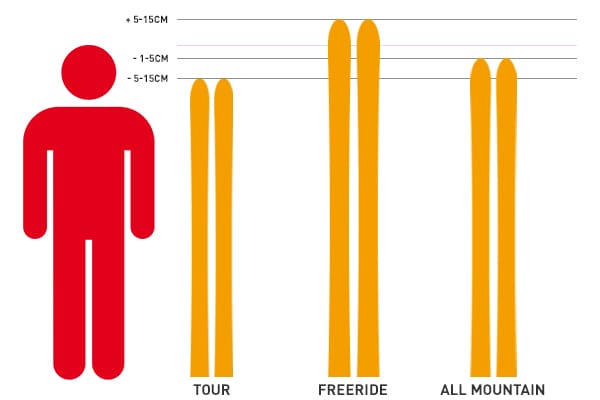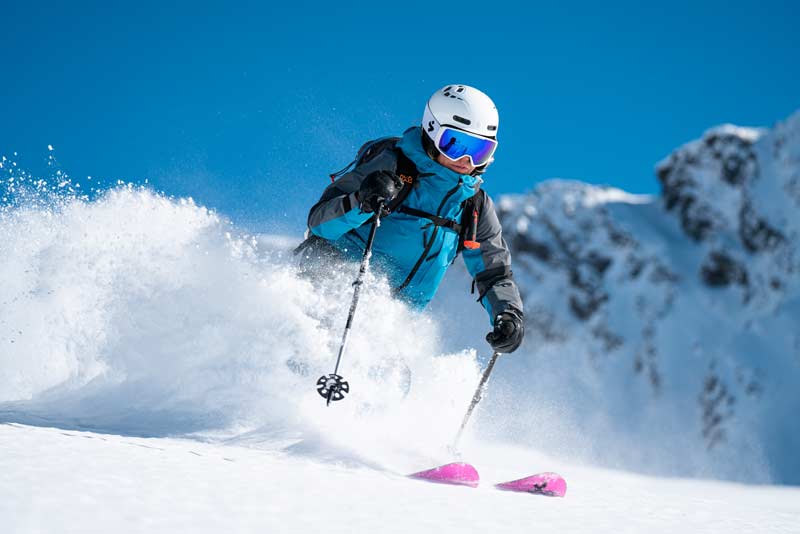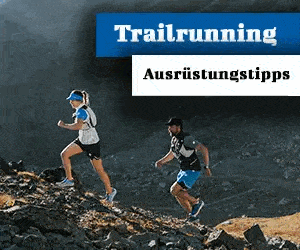Between chin and forehead. This is the rule of thumb for the optimal ski length. But it's not that simple. Because ultimately the area of application and the preferred skiing technique play a decisive role, whether a ski is longer or shorter. We'll show you where to put the measuring tape for the optimal ski length for ski tours, freeriding and the like.
A contribution by Fabian Reichle - Bächli Bergsport
Not all skis are the same. What used to be just two straight slats on your feet a long time ago has long since become much more complex with specific models for ski touring, freeride and everything in between. Different skiing preferences do not make it easier to choose the right ski - starting with the length of the ski. We're trying to give you a little guide.
To disentangle the complex topic a little: There is a rule of thumb for the length of the ski. If the skis end somewhere between your chin and forehead, you are already on the right track. - but only to a limited extent. There is also another crux here. If you do not have the skis physically at hand, you will have to rely on the length information provided by the manufacturer. Most brands offer you recommendations and length tables on their websites - just like it for example Faction does.
If you do not have the skis physically at hand, you will have to rely on the length information provided by the manufacturer.
With the rough estimate of the length you will already be able to narrow down your selection - usually two to three lengths remain in the race. As I said, this is by no means decisive for the match, because your height alone is nowhere near enough. Now it's time to get down to business. Think about the following issues. The more you think about the individual points, the more precisely you will be able to decide.
Environment: Tours, Freeride, Race?
As mentioned at the beginning, think about how you will or want to be on the mountain at all. Of course, we limit ourselves to mountain sports off-piste - these types of skis would expand the spectrum many times over.
A principle also applies here: If you are more uphill-oriented, your skis are shorter, downhill-oriented people choose longer models.
In principle, we are talking about skis for touring, freeriding, free touring, all mountain and racing. A principle also applies here: If you are more uphill-oriented, your skis are shorter, downhill-oriented people choose longer models. The lengths differ as follows.
- Touring skis: Rather shorter, body size minus five to 15 centimeters. On the one hand, this reduces the weight, which is of benefit to you on the ascent and on carrying passages, on the other hand, it results in technical advantages, such as easier handling of switchbacks.
- Freeride skis: Definitely long, height plus five to 15 centimeters. When you plow through deep snow, longer skis give you more contact surface and thus more buoyancy. In addition, the skis run much smoother in rough terrain.
- Free touring and all mountain skis: Length different. As the name suggests, these types of skis combine the best of both worlds. Here you have to make compromises and consider the terrain in which you will mostly be traveling. If the tour character tells you more, if you decide on shorter skis, if descents in powder are important to you, you should choose a longer model.
- race skis: If you take part in competitions, the minimum ski length is determined by the organizer's regulations. Longer models are usually not an advantage.

Geometrie: Camber or rocker?
Next you deal with the construction of the skis. In addition to mixed forms, the focus is primarily on camber (negative preload) or rocker (positive preload). Due to their central contact surface, the latter are more easy to turn, more playful and ultimately more forgiving. This in turn means that rockers are usually easier to ski even with longer skis.
However, as there are a number of hybrid designs such as tip or tail rockers, as mentioned, a general statement on the length selection is only possible to a limited extent. But to come back to the more beginner-friendly rockers: Your own level of skiing and your individual style have an impact on the length of the ski.
Driving skill & style: Short turns or carving?
In a nutshell: As a beginner, you should ideally opt for a shorter ski, while advanced and professionals use longer ones. Long skis require more control, but are also more direct, offer more edge hold and are smoother, which makes them capable of higher speeds. A shorter ski, on the other hand, is more forgiving and more playful. Be careful with skis that are too short: although these have a very low turning resistance, they require your body to be in a neutral position forwards and backwards so that you do not suddenly tip over. That makes supposedly short beginner skis difficult to ski.
Be careful with skis that are too short: although they have a super low resistance to turning, they require your body to be in a neutral position forwards and backwards.
The question of how do you prefer to get around is still missing? The curve technique is particularly relevant for this. If carving with long, deep radii is your thing, shorter skis are an advantage; if short turns are your world, then with longer skis you will ultimately have more edge hold. A small note in brackets: In addition to the length, the sidecut of a ski also comes into play here. The stronger this is, the tighter curves you can drive.

Consider body weight when choosing length
Even if your body weight does not have the decisive influence on the length of your skis, it is a factor that should not be underestimated. Tall skiers with a powerful skiing style will experience more stability with longer models and benefit from additional buoyancy in deep snow. While small, light people benefit from the agility of a shorter ski.
Conclusion
The stubborn rule of finding suitable ski lengths primarily based on your own height is outdated. It is an aid and a rough guide, it is more about how you drive, not who is driving. That means: Discipline, terrain, skiing ability and so on play a far more important role, whether a ski should be rather long or rather short.
Discipline, terrain, skiing ability and so on play a far more important role as to whether a ski should be long or short.
In addition, the length is one thing. The other are further properties of a ski: the waist, the waist width or the weight of the material - wood, carbon, fiberglass and so on make the decisive difference here - also play a role in successful days on the mountain.
You can find an overview of our current ski models of the season in our Ski rating.
That might interest you
- More comfort: ST Rotation 10 ski touring binding from Dynafit
- Movie about the hardest ski touring race: Patrouille de Glacier
- A lot of love for details: Bluebird all-round ax from Blue Ice
About Bächli mountain sports
Bächli mountain sports is the leading Swiss specialist shop for climbing, mountaineering, expeditions, hiking, ski touring and snowshoeing. At currently 13 locations in Switzerland, Bächli Bergsport offers its customers expert advice and high-quality service. Published on LACRUX Bächli mountain sports periodically exciting contributions to the topics climbing, bouldering and mountaineering.
+ + +
Credits: picture and text Bächli Bergsport


